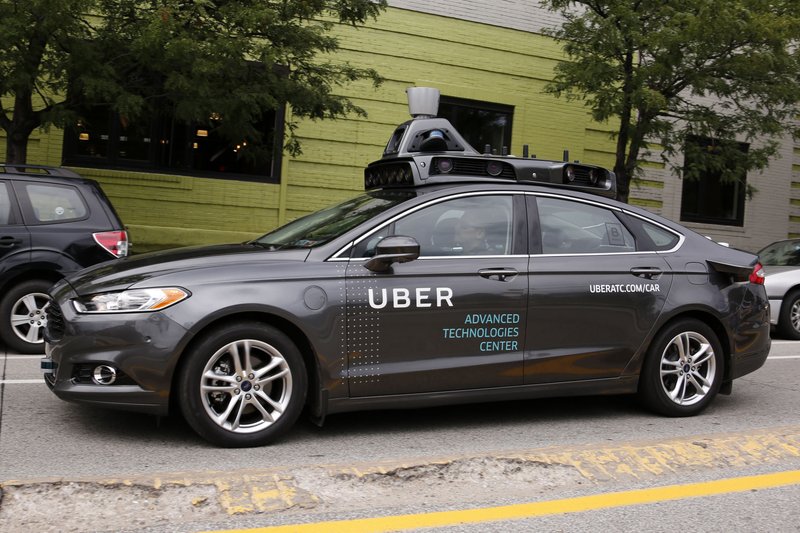Automotive technology has advanced to the point that some vehicles can operate without a driver, and extensive testing of autonomous vehicles has already begun.
Google has dozens of vehicles that need no driver and have logged 700,000 miles of accident-free driving.
Ford Motor Co. has set a goal of putting a fully driverless vehicle, without steering wheel or pedals, on the road by 2021.
Uber has acquired Otto, an autonomous driving startup company of former Google employees, and has worked with Volvo on driverless vehicles of its own.
The introduction of autonomous vehicles seems to be happening quickly, but changes to auto insurance aren't likely to move as fast, an insurance expert said.
"These [driverless] vehicles will still need to to be insured in some form or fashion," said Robert Passmore, assistant vice president for personal lines policy for the Property Casualty Insurers Association of America.
That includes insuring them against damage from hailstorms, hurricanes or floods, Passmore said.
State Farm, the largest auto insurer in the country and in Arkansas, is closely monitoring autonomous or driverless vehicles, said Kip Diggs, a State Farm spokesman for a four-state area including Arkansas.
"We are looking at the future from various perspectives, including [effectiveness of the technology], customer needs, regulation, underwriting, liability and repair costs," Diggs said in an email.
The technology for driverless vehicles has the potential to improve safety, Diggs said.
"It is a good thing for our customers, so we are supportive," Diggs said. "This technology has the potential to reduce the number of automobile crashes. [But] the extent to which these crashes, injuries and fatalities might be reduced remains to be seen."
As crash avoidance technology becomes standard equipment, it could reduce the frequency and cost of crashes, Diggs said.
"Any reductions in the number and extent of crashes, injuries and fatalities will likely impact auto insurance costs for all auto insurance carriers, including State Farm," Diggs said.
There are several factors that affect insurance rates, including the cost of repairing more complex automobiles, Diggs said. The liability landscape could change as technology advances, he said.
Passmore said driverless cars will be more expensive.
If a driverless car is still owned by an individual, instead of leased by a company, for example, it will be an expensive asset that the owner will want to protect, Passmore said.
As the technology reduces risk associated with human driving, other risks could emerge, Diggs said.
"We are focused on understanding those risks and providing solutions to help our customers manage those risks," Diggs said.
As long as the vehicles have the ability for drivers to take over, insurance will be needed.
"If there's an accident, was it the car or the driver [at fault]?" Passmore asked.
It took more than 20 years for air bags to be available in a majority of vehicles, Passmore said.
"And I think that will be the case here," Passmore said. "Especially when you think that the average age of vehicles on the road now is about 11 years."
There are several points of view about driverless cars, said Dennis Jungmeyer, president of the Arkansas Automobile Dealers Association.
"The most prevalent point of view is about infrastructure," Jungmeyer said, referring to a conference he attended recently. "There would be so few areas, especially for rural America, that would have the infrastructure to accommodate the car."
The technology is advancing so fast, it could take time for the infrastructure to catch up, Jungmeyer said.
The obstacles, for example, include the highway system in rural areas, Jungmeyer said.
Are the signs and highway markings uniform enough for the car to identify them?
Passmore said that the Google driverless cars have trouble navigating in rain and snow. In those cases, the car asks the occupant to take over.
"Its sensor system is based on familiarity with the area," Passmore said. "So it needs to visit an area several times so it can know where everything is and maps the area so it can avoid collisions."
Even though the technology is available now on a limited basis, it is likely it will not be common for a much longer time.
"While the technology may be here now, and [the vehicles] may be readily available in the next five to 10 years, [experts] say it may be 20 years before there is substantial activity in that regard," Jungmeyer said.
SundayMonday Business on 10/17/2016
